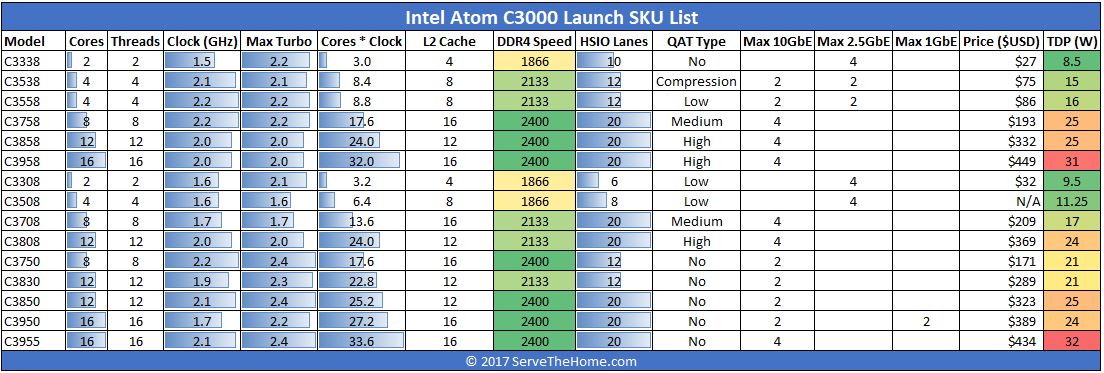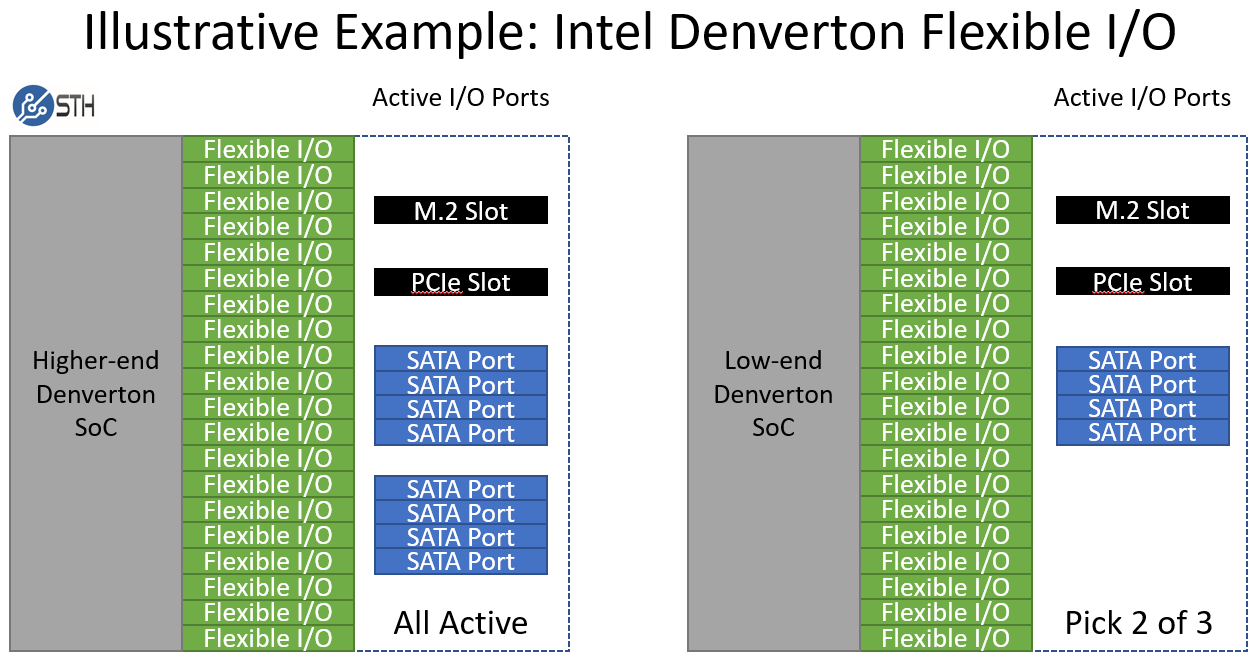Supermicro A2SDi-8C+-HLN4F Power Consumption
We used our pair of Extech TrueRMS Power Analyzer 380803 units to take measurements at different points of the Supermicro A2SDi-8C+-HLN4F use on 120V power in the embedded lab. Embedded platforms tend to spend more time at the edge in offices rather than in higher power data centers, hence why we do our testing at a lower voltage. Here are the figures:
- Power off BMC only: 4.9W
- OS Idle: 19.1W
- 100% Load: 32.7W
These are solid results. We want to note here that the Delta 4-pin PWM fan on the Supermicro A2SDi-8C+-HLN4F is not completely silent. It is quiet and in an enclosed system it is barely audible, however, the noise is there. We wish Supermicro could come up with a performant yet silent solution in this class of products.
Supermicro A2SDi-8C+-HLN4F High-Speed I/O Lanes
One of the key features of the Supermicro A2SDi-8C+-HLN4F is the Intel Atom C3758 SoC. This is one step directly above the quad-core Intel Atom C3558. Supermicro makes a Supermicro A2SDi-4C-HLN4F which at first may seem simply like a $198 lower price point for losing four cores and a fan. The answer is actually different owing to how the Intel Atom C3000 series high-speed I/O lanes work. Here is a family chart.

As you can see, the Intel Atom C3558 has only 12 HSIO lanes while the Intel Atom C3758 has 20 HSIO lanes. That matters as it means that all of the board’s I/O can be used on the Supermicro A2SDi-8C+-HLN4F, whereas trade-offs need to be made on the Supermicro A2SDi-4C-HLN4F.

When comparing these two platforms, there are really three vectors one must consider. First, the higher CPU and QAT performance. With the 1GbE onboard networking, the 10GbE is less of a feature upgrade in these platforms. Instead, one also needs to look at the high-speed I/O lane situation to ensure the platform meets expansion requirements. That $198 difference can easily be offset if one needs to add an additional device to make up for the HSIO differential.
Final Words
The Supermicro A2SDi-8C+-HLN4F is one of those platforms we really like. If one were to say that it should have 10GbE networking, Supermicro makes the A2SDi-H-TF version of this platform for that application so we cannot fault a platform for a segmentation option.
If you have an Intel Xeon E5 V1 or V2 system that is running a 10-bay SATA storage 2U form factor, the Supermicro A2SDi-8C+-HLN4F is going to be a strong upgrade option. There is an entire storage market segment where 12x SATA lanes, a PCIe 3.0 x4 slot and a M.2 NVMe slot are more than enough to exceed requirements. The quad 1GbE networking onboard provides a solid base for a networking appliance as well. If you are a software ISV looking to add QAT acceleration to your storage or network solution, this is a great platform to work with. It combines low power with plenty of performance.




How does this compare to the Epyc 3000 series on a performance/$ aspect?
Thanks for mentioning the H-TF (10GbE) version. I guess there wasn’t room for a couple 1GbE too. But only ~$100 more for 10GbE doesn’t seem so bad (per Amazon).
This one is nice, since it has the 2x 8643 headers. One PciE slot… I’d have to decide between a M.2 sled or 10GbE… though I wouldn’t get many M.2 drives, most likely just one extra :(
Interesting little product. I like the twin SFF 8643 ports. I would like to see them progress to PCIe 4 becuase there are time when using two RAID 10 Vols on a Areca 12G 1883ix-24 that I will saturate the 12G bandwidth.
Park they can’t just progress. It’s limited by the Intel chip. No Intel chips have PCIe4 to this day
Any idea if the C2000 bug still existing on this new platform? I am considering about this but worry about C2000 bug still “carry out” to C3000 platform.
I own this board and I’m not able to reach 14W in idle. My result is 21W with only IPMI connected, one SATA SSD and one RAM module, so I contacted Supermicro and this is their answer:
“we do not have figures for the 8C model but we do have them for 12C model which is also 25W TDP.
The idle consumption was 26.19W, your result of 21W seems normal to us.
We do not know how serverthehome got those figures.”
So how do you meassured 14W? I’m very disappointed about the idle power consumption because the predecessor had a similar low consumption and now its much more (for a Mini ITX project).
Could you provide a bit more information as to how you test power consumption? You specify the measuring device, but not the PSU used (its efficiency obviously affects the test), and any connected peripherals.
Where to buy it?